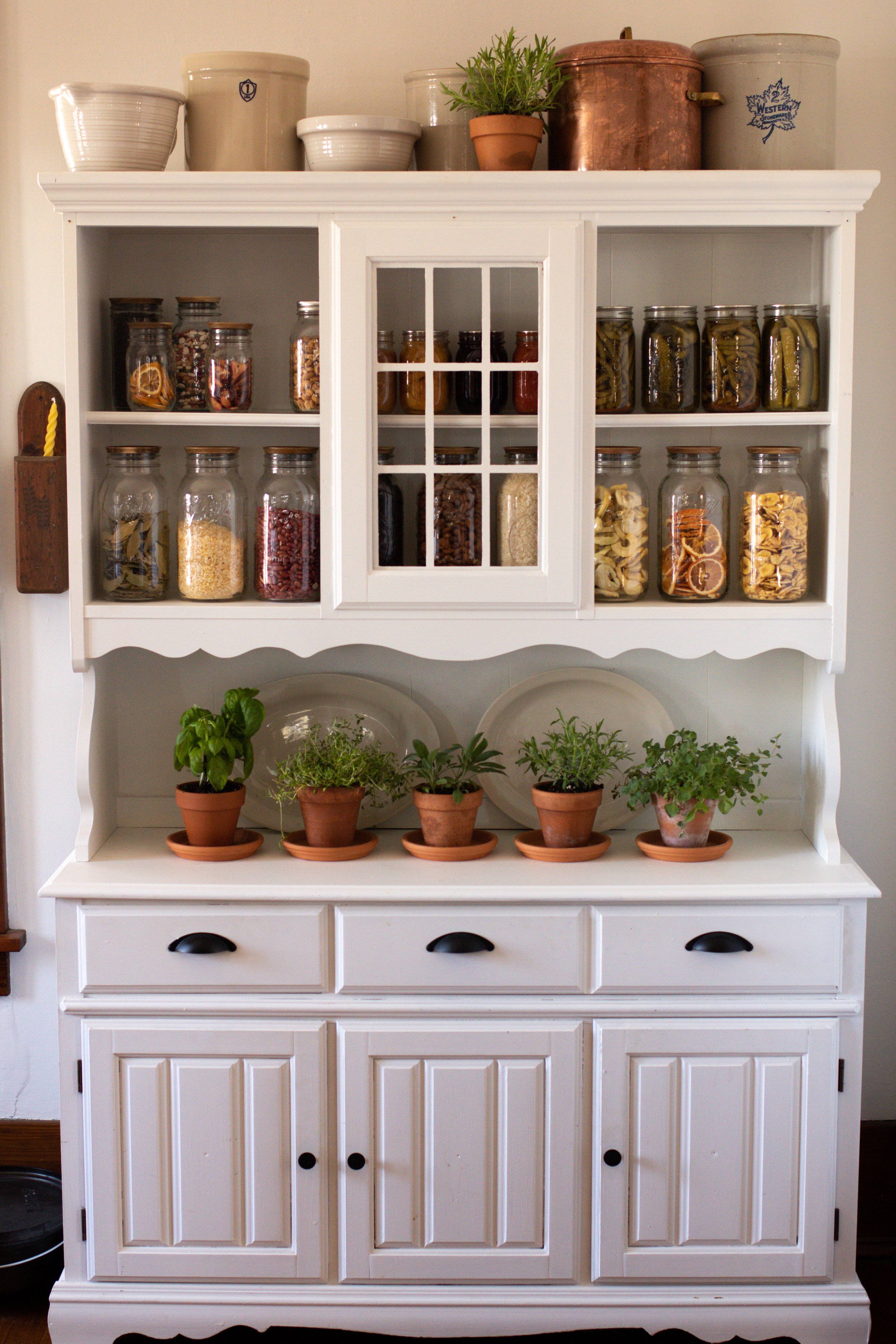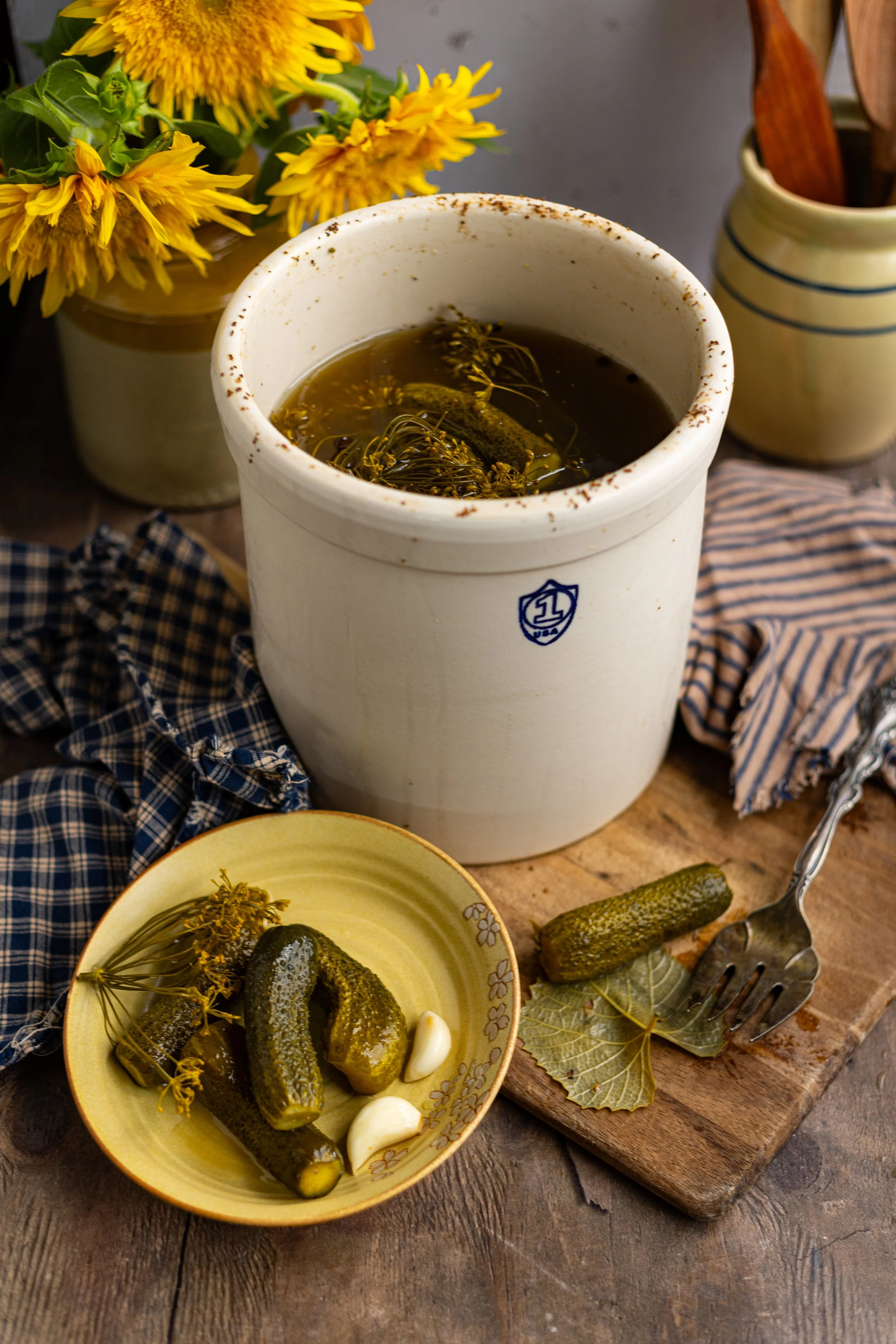Tips for Dehydrating Fruits and Vegetables
This post is sponsored by the makers of Ball® home canning products.*
We have been having a lot of fun recently learning more about dehydrating our own food at home. It has me looking forward to this summer when the produce in the garden is ready for harvesting! I love learning new preserving methods and using them in our homestead bulk pantry. I had no idea how many different types of foods that you could dehydrate - the possibilities are endless!
In this post, I want to share a few basic tips for dehydrating your own fruits and vegetables. This can be done using a food dehydrator or the oven. I have dehydrated by air drying before, too, but I would not recommend this as a beginner in case of spoilage. In the photos of our various dried fruits, vegetables, and herbs I used the new Ball® Wooden Lids to showcase our hard work and beautiful food! The lids are designed with Acacia wood and can be used for both Regular Mouth and Wide Mouth jars. They are so beautiful!
which foods can you dehydrate?
Fruits: Strawberries, blueberries, cranberries, grapes, bananas, citrus, peaches, raspberries, apples, mangos, pineapples, cherries, plums, apricots, rhubarb, blackberries, etc
Vegetables: Tomatoes, sweet potatoes, zucchini, bell peppers, carrots, squash, mushrooms, broccoli, celery, corn, beans, pumpkin, onions, garlic, kale, potatoes, peas, etc
Meats: variety of jerkies, ground beef, chicken, deli meats, and fish
Herbs: basil, rosemary, parsley, thyme, sage, oregano, marjoram, lavender, fennel, etc
how to dehydrate fruits and vegetables:
Wash and fully dry produce. This is a good idea for any recipe you make!
Remove any inedible peels. For any fruits or vegetables where you would normally toss the peel, it is best to remove it before drying. An exception to that rule is citrus fruits, which can have the peel left on, if you prefer!
Slice produce thinly. For the most part, your produce should be sliced to about 1/4” to 1/2” thick. This is a generalized rule as there are several fruits and such that can be left whole or halved. Things like apricots, strawberries, blueberries, cranberries, etc do not have to be sliced. The thinner you slice the produce, the faster it will dehydrate.
Keep produce in one layer in the dehydrator. Do not overlap pieces of fruit while drying. This will prolong the process and could potentially result in the fruit pieces not becoming fully dried out where they are touching each other. Spread everything out evenly so that it is not touching. It may take a few rounds to dry out your summer harvest!
Toss produce with bottled lemon juice. This helps to prevent it from browning after you slice it!
Dehydrate at around 140° F. We like this temperature for dehydrating produce the best. Some dehydrators can be manually set while others have pre-set temperature options. The amount of time will vary, but in general it takes about 12 hours to dehydrate at this temperature.
Make sure produce is fully dried before storing. This is a big one! It can be difficult to tell when your produce is fully dried, but the end result should have no moisture left to the product. This ensures that your food will not mold and will last for months and months in storage. To dehydrate in the oven, set to the lowest temperature and check every hour.
storing dehydrated foods:
For dehydrated foods, they can be stored in most glass or plastic food-safe containers. I would not recommend storing produce in a metal container, if you can help it. I like to use a variety of glass Ball® jars in various sizes. This helps me to see what we are getting low on, and it’s visually stunning to see all of the work you have put in to preparing and storing your food!
You will want the container to have an airtight seal to keep it fresh and prevent it from becoming stale. The new Ball® Wooden Lids are a beautiful way to seal in the flavor of your dried foods! They come in Regular Mouth and Wide Mouth sizes and work with a variety of sizes of Ball® jars and are even stackable. How great is that?
Dehydrated fruits and vegetables can last up to one year on the shelf. Of course, this depends entirely upon how well you dried out the food and the type of food that you are storing. For the longest storage results, dehydrated fruits and vegetables should be kept at around 60-65° F. They should be stored in dimly lit areas to hold in the best flavor and coloring.
Check your dried produce regularly. This is a good practice to keep for any preserved foods to ensure that they are not molding, discoloring, or going rancid. I like to check up on all of my preserved foods about once per month.
Will you be dehydrating some of your garden produce or farmer’s market finds this year? I would love to hear about some of the unique foods that you have dried. I hope to make some fun fruit leathers this summer for my kiddos!
Click here to shop the Ball® Wooden Lids.
xoxo Kayla
*Disclosure: This is a sponsored post that is part of an ongoing partnership with the Fresh Preserving Division of Newell Brands. They have provided jars, equipment and monetary compensation. All thoughts and opinions expressed remain my own.









